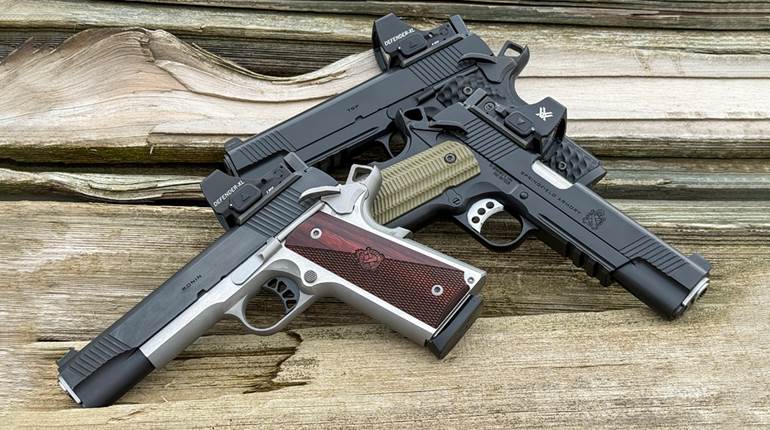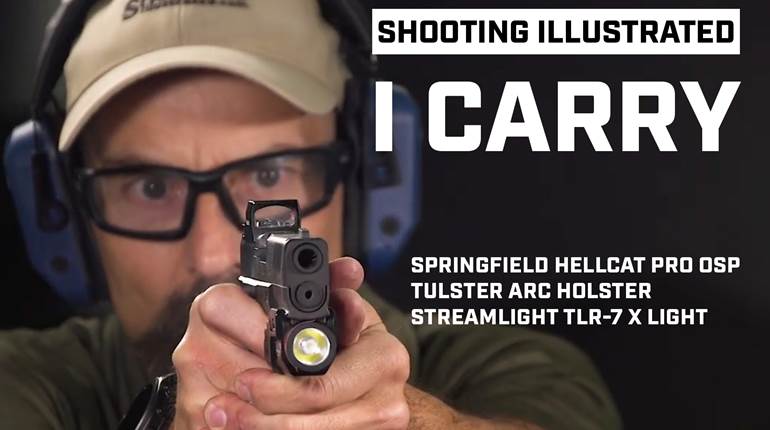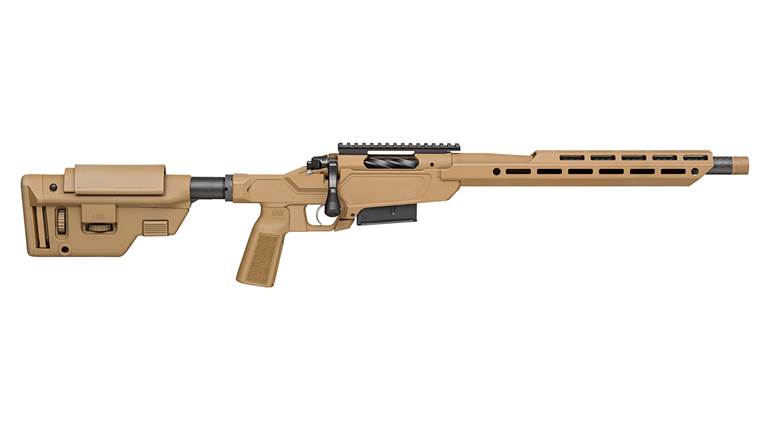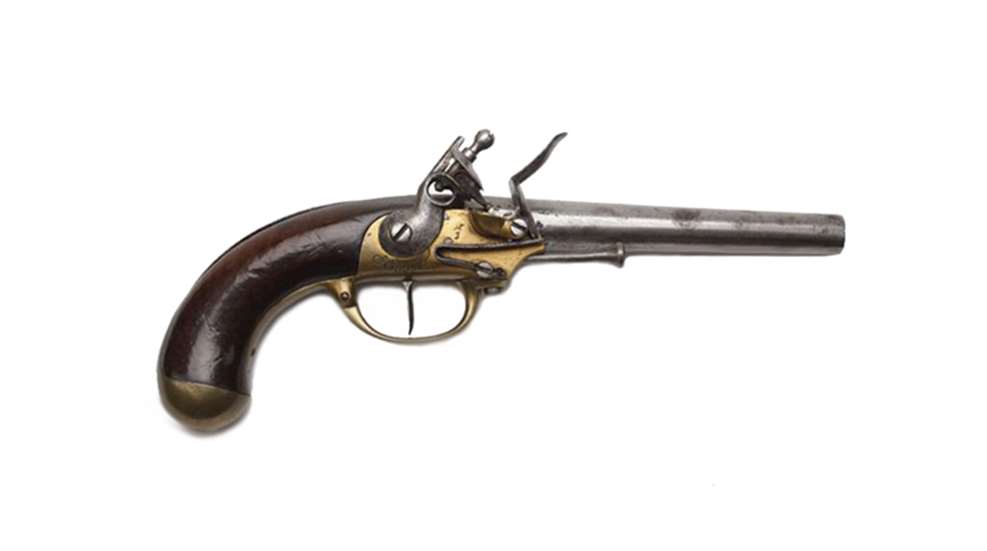
Recent years saw the saga of military-handgun testing and evaluation enter news headlines across the country, as the U.S. military embarked on its Modular Handgun System program to replace the aging Beretta M9, in service since 1985. However, sidearm selection, while infrequent in American history, is not new, having a storied history dating back to numerous private-contract guns from the late 18th century to the Model 1805 Harpers Ferry pistol, the country’s first sidearm produced by a national armory.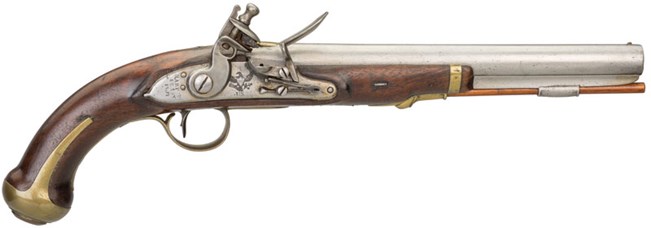
Model 1805 Harpers Ferry pistol
Though the Harpers Ferry Model 1805 is often considered the first U.S. Martial pistol, the journey from the dawning days of the American Revolution to the requisition of the country’s first armory-produced sidearm was a long one. Martial-pistol development in the U.S. military rose from a hodge-podge of hastily assembled arms during the mid-1770s to a number of private-enterprise contracts before settling on U.S.-designed arms made in a U.S.-government facility.
In large part, the development of a standardized sidearm was less of a priority in the early days of the Revolution, largely due to the fact that comparatively few pistols were needed in a war dominated by the musket and long rifle. The few who required pistols often had or purchased their own, and the even fewer who still needed sidearms (mounted troops, messengers and boatmen) in the service of the fledgling republic were relegated to using a far-from-standardized collection of privately made arms or foreign imports.
Early Committee of Safety pistols made up the bulk of these guns, but finding survivors from this early batch of martial pistols is difficult. In general, these guns were similar to the French and British land-service pistols at the time. One such example of a Committee of Safety pistol is preserved at the Smithsonian Museum of American History, having been privately produced by William Whetcroft of Maryland for the Maryland Council of Safety around 1776.
A musket produced for the Committee of Safety
Unfortunately, for fans of U.S. Martial pistols, the early history of this country’s sidearms doesn’t get much clearer with the establishment of governmental structure under the Continental Congress. However, a long, slow march toward the creation of organized, structured U.S. armories began in the chaos of revolution.
Early arms production and storage was established at Valley Forge, an ironworks located on the Schuylkill River that would later become famous as the winter encampment of the Continental Army during the winter of 1777-1778. However, a September 1777 raid by Hessian mercenaries under Wilhelm von Knyphausen led to the capture and destruction of the forges and stored materiel, and the site was abandoned for the remainder of the war following the army’s departure in 1778.
However, in 1777, at the urging of his artillery chief Henry Knox, George Washington established Springfield Armory, located on a bluff overlooking the Connecticut River. This site would eventually become a hallmark of U.S. arms production, but the location served mainly as a storage depot for arms and ammunition throughout the 1780s and early 1790s, until it became necessary to incorporate firearm production into the armory’s duties.

Charleville musket with Maryland markings
Revolutionary fervor in France in the late 1780s and early 1790s led the U.S. government to examine its arms-acquisition strategy, as the young nation had relied mainly on firearm imports from France combined with a mix of private-contract arms. During the Revolution, the French supplied Continental Army troops with thousands of its Model 1763/66 Charleville muskets and by the mid-1790s, U.S. arsenals held about 20,000 of these arms. Along with these guns, the French also supplied an unknown number of Model 1777 Charleville pistols, making this one of the more-standardized military sidearms of post-Revolution America. However, strained relations with France in the 1790s made the U.S. dependence on French-supplied arms a dicey proposition. For security’s sake, the country had to produce and maintain its own arms. In 1794, the Third Congress of the United States passed “… an act to prove for the erecting and repairing of arsenals and magazines and for other purposes.”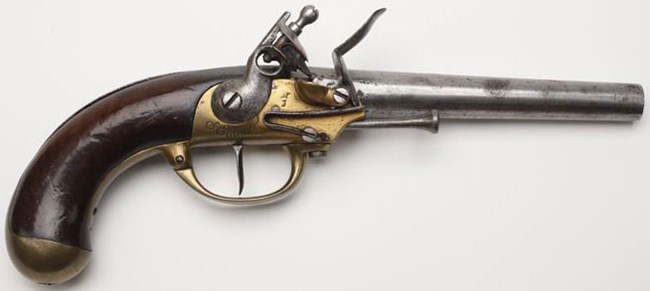
Model 1777 Charleville pistol
The details of the act provided extraordinary latitude to President George Washington as to the establishment of these arsenals. With this directive Springfield Armory, recognized thereafter as the United States Armory, spun up to produce what would become the country’s main military arm, the Model 1795 Musket, which borrowed heavily from the design of the Charleville muskets already in use. However, it was clear that Springfield Armory alone didn’t have the bandwidth to quickly supply U.S. troops, as the armory produced only 245 muskets during its first year in operation. More had to be done.
Davide-Pedersoli reproduction of a 1795 musket
Between resigning his commission as commander of the Continental Army and being elected the first president of the United States, Washington served as president of the Patowmack Company, a charter venture that aimed to improve the navigability of the Potomac River. As part of this project, Washington traveled to Harpers Ferry and became enamored with the tremendous water power offered by the confluence of the Shenandoah and Potomac Rivers. Ten years later, when selecting the site of a second national armory, Washington knew exactly where to place this industrial operation, and in 1796 the U.S. government purchased 125 acres from the heirs of the town’s namesake, Robert Harper.
It wasn’t as easy as signing a contract and cranking out pistols though. The National Armory at Harpers Ferry had a long way to go before it would be in a position to turn out acceptable arms. Meanwhile, Springfield Armory had already maxed out its manufacturing capacity focusing on Model 1795 muskets. As the young republic lurched toward the turn of the 19th century, its inventory of imported sidearms and private-contract guns was getting old and worn out. Indeed, a post-war inventory of U.S. arms showed the military had 1,225 pistols, of which 420 of them were regarded as unserviceable; at this point, the Revolution had ended nearly two decades prior.
Years would pass before either of the country’s national armories were in position to produce an adequate supply of pistols for use by mounted troops, so the government turned back to private industry for a stopgap solution, passing an appropriations bill of $800,000 in 1798 for the production of arms and ammunition.
The first of these contracts were issued to Robert McCormick of Philadelphia. The contract specified the production of 100 “ship’s pistols,” and these guns were largely assembled from available components, noted by the “Ketland & Co.” locks that refer to either the Ketland brothers of Philadelphia or the London-based manufactory of Thomas Ketland.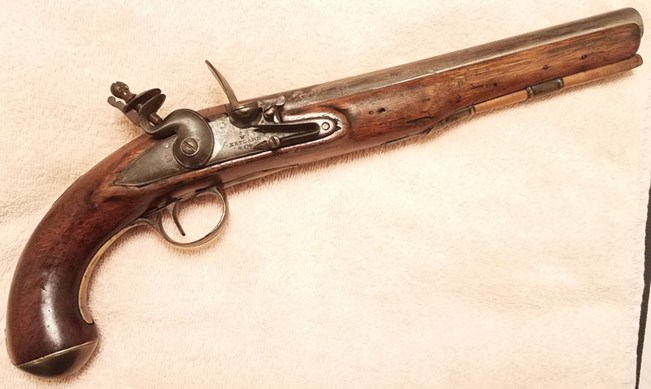
Ketland Trade Pistol
While McCormick labored to finish these guns, the government also contracted with Simeon North and Elisha Cheney of Connecticut in 1799 for the production of 500 contract guns. These guns would become known as the Model 1799 North & Cheney pistols, with their design largely borrowed from the Model 1777 Charleville pistol, though the contract guns had an extra inch added to the barrel, as well as a few other slight modifications. Though the first contract specified 500 guns, the government returned to North & Cheney mid-way through the production run to add an additional 1,500 pistols to the contract, and all 2,000 guns were finished by 1802.
At the same time, the Harper’s Ferry Arsenal was ready for production, though much of the work it could do was limited by the small size of the armory. At the facility’s opening in 1801, there was a single work room staffed by 25 employees. Handguns weren’t high on the priority list at its opening, and the armorers focused mainly on the production of the Model 1795 and modification of 1794 private-contract rifles, shortening the guns and enlarging the bores from .49 caliber to .54 caliber.
Meriwether Lewis and William Clark arrived at the newly minted armory in 1803, requisitioning guns for their famed expedition westward. Many of the modifications they requested were implemented on these 1794 contract guns, leading to the creation of the armory’s first homegrown rifle design: the U.S. Model 1803.
Following the production of this short rifle, Secretary of War Henry Dearborn issued the first pistol contract to Harpers Ferry on November 13, 1805, directing the armory to produce 4,000 smoothbore pistols in .54 caliber. The road to the Harpers Ferry Model 1805 pistol, one of the most-famous flintlocks of the 19th century, was paved.
Additional Reading:
Model 1805 Harpers Ferry Pistol: Building the Davide-Pedersoli Kit
The Model 1805 Harpers Ferry Pistol: Launching the Reproduction Era
The Model 1805 Harpers Ferry Pistol: From Inception to Insignia













